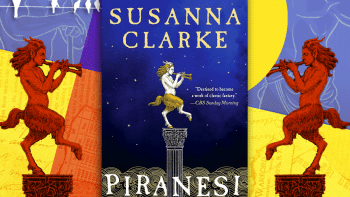How Jules Verne’s ‘Journey to the Centre of the Earth’ got me through typhoid

Autumn, 2012.
I got out of my doctor's chamber in Shantinagar with a fragile body, still trying to comprehend what being tested positive for typhoid really meant. For second grade me, the name of the disease I was infected with seemed like something completely alien, unlike the more usual suspects such as fever or common cold.
As I crossed the street while holding my parent's hands, I came across the newly opened book shop at Shantinagar—PBS. Upon begging my parents to take me there, I was led up the stairs into the bookshop and upon entering I was completely lost in the ambience of music, and the diverse collection of books.
Exploring every inch of the stacked bookshelves, I found myself pondering upon an original copy of the Puffin Classics edition of Jules Verne's Journey to the Centre of the Earth (1864). While my eyes glossed over the green paperback cover, I was immediately intrigued to buy the book as I had watched a movie adaptation with the same name a few days back.
Excitement brewed inside me to read the book like a storm in a cup. While the story did take some time to get going and I initially struggled with it due to my short attention span, I simply could not keep it down when it finally took off.
The book begins like any other great adventure story—with an encrypted message on an old parchment. The story then follows the journey of the very ardent Professor Otto Lidenbrock who drags his reluctant nephew Axel on the adventure of a lifetime, to the very centre of the earth, based on the encrypted message.
Despite the fact that I morbidly lay down on my bed while reading the book, Jules Verne's accurate and picturesque description of the characters' journey made my mind travel out of my confined bedroom to the "sad, dismal" streets of Iceland's capital Reykjavik and into the centre of the earth.
What made the book stand out was not just the plot, but the vivid descriptions of the places the characters went to throughout their journey. From the volcanic tubes and craters to the majestic view from the top of the Sneffels volcano, I could easily imagine the intricate scenes which lay in front of the characters.
"I could see deep valleys crisscrossing in all directions, precipices hollowed out like wells, lakes reduced to ponds, and rivers turned into streams. On my right were countless glaciers and innumerable peaks, some plumed with faint wreaths of smoke. The undulations of this infinite succession of mountains, whose patches of snow looked like foam, reminded one of the surface of a stormy sea." Reading such arresting and charming prose, alongside the equally exciting plot with its sharp twists and turns, kept me hooked to the book while I went through it cover to cover, devouring the story as if it were Swiss cheese with French wine.
It is true that, for a lot of readers, the writing may seem old-fashioned at first glance and reasonably so, especially considering the fact that it was written about one hundred and sixty years ago. However, the adventurous storyline coupled with the myriad of timely suspenses makes the book stand the test of time.
By the time I was done with the book, I was completely healed, both physically and emotionally. Reflecting upon the experience, I have always admitted that it was a life altering journey—not just for the book's characters but for me as well. Jules Verne opened my eyes to the wonderful world of science-fiction, a world where the pinnacle of human imagination meets the beauty of the known.
Hrishik Roy spends most of his days procrastinating and overthinking. Please provide him with consolation at [email protected].

 For all latest news, follow The Daily Star's Google News channel.
For all latest news, follow The Daily Star's Google News channel. 










Comments